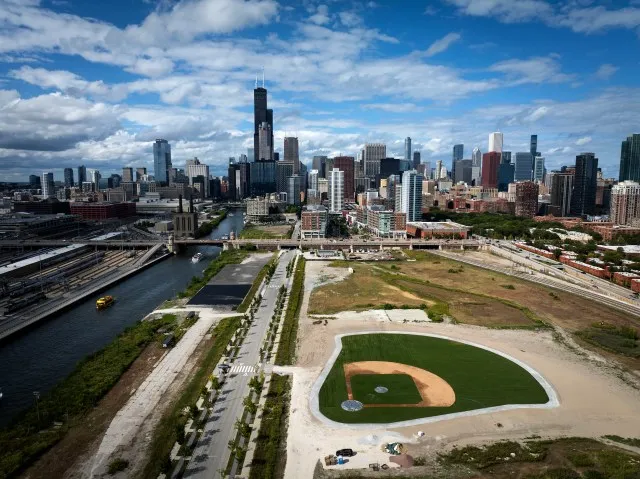Chicago has always loved big plans. It is an enduring legacy of Daniel Burnham's 1909 Plan of Chicago and his oft-quoted exhortation to "think big." But "big" most certainly isn't always better, and it hasn't always worked out well, even here.
We currently have a boom in such fever dreams. At least eight proposed projects could add 128 million square feet of construction covering almost 800 acres as well as billions of dollars to the city's economy.
The projects include Lincoln Yards on the North Side, the Bally's casino at Halsted Street and Chicago Avenue, the United Center 1901 project on the West Side, the Bears' Burnham Park project on the lakefront, The 78 and One Central Chicago in the South Loop, development of the site of the former Michael Reese Hospital on the Near South Side, and the Illinois Quantum and Microelectronics Park at the old U.S. Steel South Works site in South Chicago.
"These are all big, bold and ambitious plans that are jockeying for a slice of public subsidies and potential tenants,"
There's just one thing that's certain: There's not a chance in the world they will all come to fruition at anywhere near the scale now contemplated. And that's not necessarily a bad thing.
Beyond the usual mix of retail, office and residential uses, some of these plans are attempting to land a 25,000-seat soccer stadium for the Fire, a 35,000-seat baseball park for the White Sox and a 65,000-seat football stadium for the Bears. Some of these projects are already cannibalizing one another or even themselves. The University of Illinois' decision to withdraw its promising Discovery Partners Institute from The 78 is due to a move to another Related Midwest development at planned quantum park.
"One critical way to evaluate these proposals is a simple one: Are any of these proposed neighborhoods comparable to those that have evolved from Chicago's basic street and density patterns?"
And the answer is no.
While density varies across city fabric structures two- to three-stories high dominate accommodating residential & commercial construction with aplomb; simplicity characterizes Chicago’s form: city blocks subdivided into lots with service alleys behind each property; skyscraper birthplace notwithstanding neighborhoods don’t need many tall buildings but none propose this form.
"Most developments hope capitalizing large properties long devoted other uses,"
Bears' Burnham Park proposal suggests building previously "unused" lakefront parkland used otherwise among projects Lincoln Yards grotesquely overscaled akin Hudson Yards NYC between Lincoln Park Bucktown while quantum park rivals McCormick Place enormity why regret new behemoth uniquely location?
No strategies reconcile quantum broader development neighborhood immediately west despite site fallow too long allowing developers proceed quickly without harmoniously surroundings effort encouraging Bears considering Michael Reese alternate unfortunate earlier unveiled remains accommodate stadium seen yet?
"Finally critical consider 'success' similarly scaled past Lake Meadows (1948-59) Prairie Shores (1957-61) Carl Sandburg Village (1961-71) Dearborn Park Phase I II River East formerly Cityfront Center Central Station Lakeshore East started financial success mega-developments fine-grained urbanity similar others."
Track record obvious developers embrace established patterns create better schemes addressing large vacant available tracts realizing potential doesn’t require idea tenant stadium need civic leaders extending thoughtful designed single-family homes flats live/work structures thoroughfares grow city genius transcends ideas modest DNA part Burnham’s idea big.
